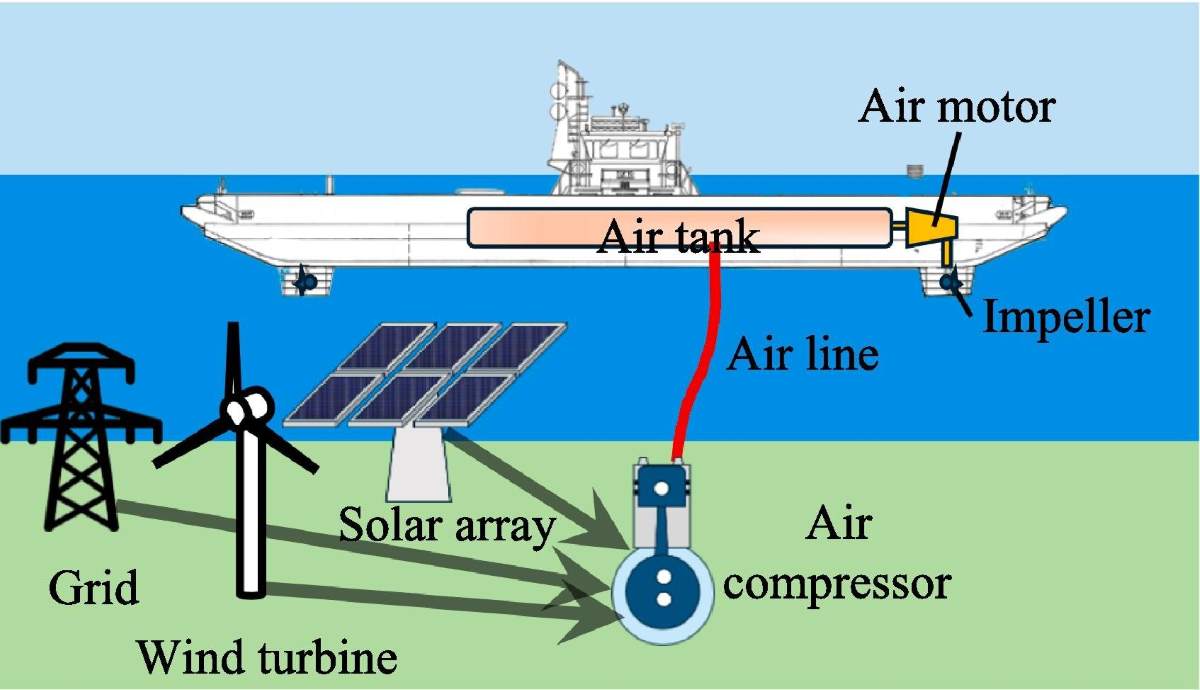

The pneumatic propulsion is cleaner, reduces operating costs and has an investment return period of approximately eight years.
- Diesel engines → replaced by Pneumatic thrusters.
- Each pneumatic engine: 250 kW of power
- System tested in a ferri of Finlandiabuilt in 1985.
- Use of Compressed air stored in high pressure tanks.
- Significant emission reduction and noise.
- Estimated savings: 73.000 USD With return in 8 years.
- Adaptable to short and predictable routesideal for Ferris.
- Improve the buoyancy Thanks to air storage.
What is pneumatic propulsion and how it works
The Pneumatic propulsion Use compressed air as a source of energy to move engines, cylinders or mechanical devices. Instead of consuming diesel or depending on batteries, the system releases air from pressurized tanks to a pneumatic pallet engine, which converts that energy into a rotary motion to boost the propeller of the ship.
In the case studied, each pneumatic engine generates 250 kilowattsenough to operate the Ferri on its usual route within the maritime transport system of Finland.
Technical and environmental advantages against diesel
Diesel engines, although robust and reliable, are responsible for High CO₂ emissions, nitrogen oxides and fine particlesin addition to being loud and depending on fossil fuels with unstable prices.
The pneumatic system provides several improvements:
- Zero direct emissions during the operation.
- Noise reduction compared to combustion engines.
- Simpler maintenance retail mechanical complexity.
- Possibility of Integrate air storage into the helmetwhich also increases the flotability of the boat.
- Compatible with renewable energy for compressed air generation, such as solar the wind.


economic Evaluation of the System
The system’s life cycle analysis shows that pneumatic propulsion can be a profitable option:
- Estimated savings of 73,000 USD Regarding the operation with diesel engines.
- Investment return (ROI) calculated in approximately 8 years.
- Lower operational costs for the Fuel consumption reduction and maintenance.
This calculation was carried out under conservative scenarios, so it is possible that the benefits are greater in practice.
Scalability and adaptability
One of the great advantages of the system is its Modular designwhich allows it to easily adapt to different types of ferris and routes. This is especially useful for Short and predictable routeswhere loading, distance and operating time conditions are constant.
In addition, the system remains operational even in adverse conditionsmaking its implementation viable in cold climates such as Finland.


Potential of this technology
The application of pneumatic propulsion in maritime transport represents a Real opportunity to decarbonize short distance routeswhere electrical or hydrogen alternatives may not be the most efficient or economically viable.
If compressed air generation is combined with renewable energies (solar, wind, hydraulic), the complete system of the system could become zero emissions. This would contribute directly to the objectives of Greenhouse gas reduction and the improvement of air quality in port areas, where pollution is usually high.
Finally, this technology offers a Viable path for the energy transition of the maritime sectorwhich until now has shown slowness in abandoning fossil fuels. Mechanical simplicity, low environmental impact and operational economy are weight reasons to consider pneumatic propulsion as a promising solution in the search for cleaner and more sustainable maritime transportation.
More information: Abdul Hai Alami et al, A techno-economic-environmental investigation of replacing diesel engines with pneumatic motors for ferry boats, Energy Conversion and Management (2025). DOI: 10.1016/j.enconman.2025.119613





